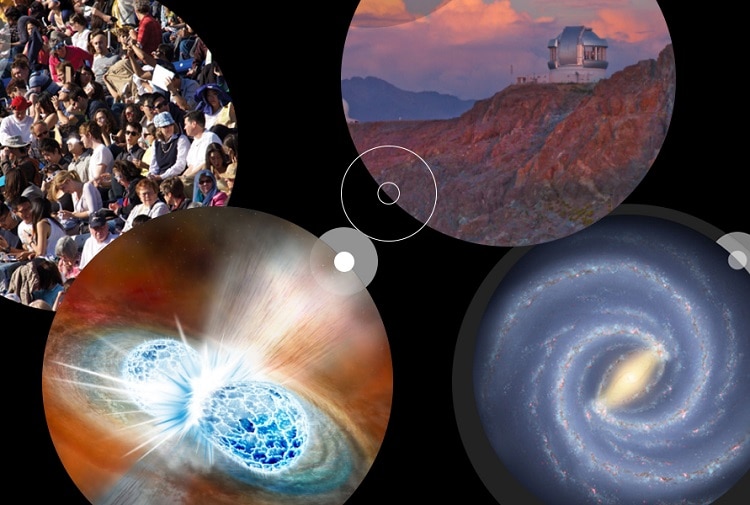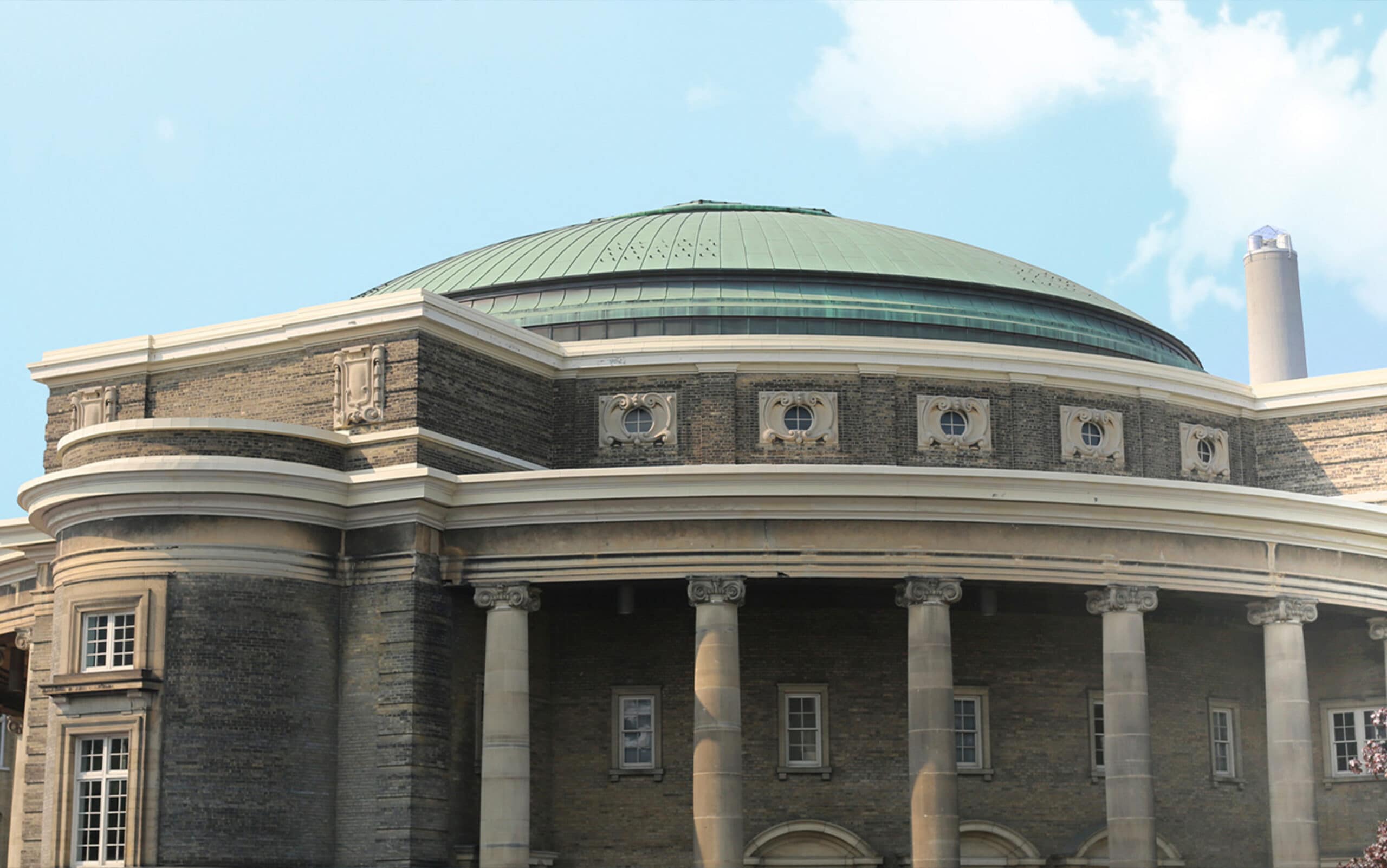A 10-year anniversary, a 100-year conversation: the Dunlap gifts to astronomy
The Dunlap Institute for Astronomy & Astrophysics, founded in 2008 with a generous gift from David and Moffat Dunlap, has become an international powerhouse on the leading edge of discovery.

Late in 2018, University of Toronto President Meric Gertler and Faculty of Arts & Science Dean David Cameron hosted David and Moffat Dunlap and members of the Dunlap family at a gala dinner to cap off the 10th anniversary of the Dunlap Institute for Astronomy & Astrophysics.
The event acknowledged the long and historic relationship between the Dunlap family and the University, which began in 1921 when David (BASc 1961, Hon LLD 2011) and Moffat (Hon LLD 2011)’s grandfather, David A. Dunlap, met Clarence Chant, founder of U of T’s department of astronomy, at an astronomy lecture given by Chant.
In 1926, Dunlap’s widow, Jessie Donalda Dunlap (Hon LLD 1935) donated funds in memory of her late husband that made possible the Dunlap Observatory in Richmond Hill. Then, in 2007, a generous endowed gift from David and Moffat led to the establishment of the Dunlap Institute.
In the words of the institute’s current director, Bryan Gaensler, “We’re not only celebrating a 10-year anniversary, but a 100-year conversation.”
The David and Moffat Dunlap gift has supported innovative technology and groundbreaking research
The Dunlap Institute, established in 2008, joined the department of astronomy and astrophysics and the Canadian Institute for Theoretical Astrophysics (CITA) at U of T to form the leading centre for astronomical research in Canada.
In the decade that followed, the Dunlap Institute grew to increasingly deliver on its mandate to develop innovative astronomical technology, conduct groundbreaking research, train the next generation of astronomers, and share the excitement of astronomy with the public.
Also in attendance at the dinner was CITA’s Peter Martin, who was instrumental in founding the institute. “The Dunlap Institute is strongly rooted in traditions associated with the Dunlap name,” Martin said. “The institute has touched many, nationally and internationally, through its innovative and ambitious research, training, and education programs. What a wonderful start over the first decade.”
The Dunlap Institute plays a leading role internationally
Today, the research themes of the institute have grown to encompass optical, infrared and radio instrumentation; data analysis; dark energy; large-scale structure in the universe; the Cosmic Microwave Background; the interstellar medium; galaxy evolution; and cosmic magnetism.
Dunlap scientists play leading roles in Canadian and international collaborations destined to make groundbreaking discoveries for decades to come, including the Canadian Hydrogen Intensity Mapping Experiment (CHIME), the Dragonfly Telescope Array, the Square Kilometre Array, the Large Synoptic Survey Telescope, the South Pole Telescope, and many others.
Dunlap’s annual Astronomical Instrumentation Summer School for undergraduate and graduate students from around the world has been the institute’s flagship training initiative since 2012. And the Dunlap Institute has sparked a love of astronomy in tens of thousands through events like Astronomy on Tap T.O., and through opportunities to view the 2012 transit of the Venus, the 2015 Supermoon total lunar eclipse, and the 2017 solar eclipse.
“The first 10 years of the Dunlap Institute were about figuring out what we want to do and then finding the right people to do it,” Gaensler said. “We now have a clear plan for the future and a superb team on board, and we’re ready to put our foot to the floor. Brace yourselves for an upcoming torrent of new discoveries and talented young researchers.”

